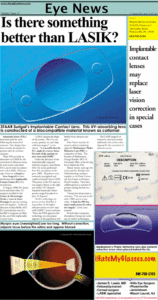Philadelphia / Bucks County LASIK Surgeon – Dr. James S. Lewis
Eye News Volume III Issue 6

Is there something better than LASIK?
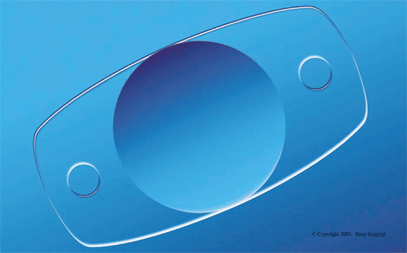
STAAR Surigal’s Implantable Contact Lens. This UV-absorbing lens is constructed of a biocompatible material known as collamar.
Implantable contact lenses may replace laser vision correction in special cases
Intraocular lenses (IOLs) have been used for years following the removal of cataracts. New designs have been recently developed for patients who do not have cataracts.
These IOLs provide an alternative to LASIK for the correction of refractive errors. In some severe cases these IOLs can be used in conjunction with LASIK. (This concept is known as bioptics.)
Staar Surgical has been developing their Implantable Contact Lenses (ICL) for several years.
In August, 2000, Dr. James Lewis and three other US surgeons travelled to the Centro de Microcirugia Ocular y Laser in Santo Domingo for special training with this implant. Under the direction of Juan Batlle, MD, Dr. Lewis became one of a handful of surgeons certified in the use of the Implantable Contact Lens.
“LASIK changes the shape of the cornea. The ICL can correct patients we can’t help with laser surgery”, Lewis claims. “It is possible that the ICL might be a better choice for some of the patients we now treat with LASIK.”
Under the direction of the Internationally respected refractive surgeon, Juan Battle, MD, Dr. Lewis performed four ICL procedures in August, 2000. All patients were extremely nearsighted and could not benefit from LASIK. The power of the ICL used in one surgery shown at the right was minus 19.5 diopters. Standard intraocular lenses powers range from plus 6 to plus 32 diopters!
“As ICL technology improves we may find that it encroaches on the higher refractive errors we now treat with LASIK”, Lewis continues. “Once the FDA approves this technology an even greater segment of the population will benefit from refractive surgery.”
Ciba Vision recently obtained exclusive marketing rights for Medennium’s Phakic Refractive Lens (PRL), a competitor of Staar. The founder of Medennium, George Rozakis, MD, of Cleveland, Ohio, is the driving force behind the PRL.
Almost twenty years ago Dr. Lewis and Dr. Rozakis were Ophthalmology residents together at the Duke University Eye Center in Durham, North Carolina. They have collaborated on a number of projects during the last two decades.
“George has always been a visionary. This was true in the early 1980’s and it is true today. I think his PRL has major implications for refractive surgery”, Lewis commented.
Several other companies throughout Europe are working on similar technologies.
The LASIK surgeon of tomorrow may have several additional tools at his or her disposal for the correction of refractive errors.
These IOLs provide an alternative to LASIK for the correction of refractive errors. In some severe cases these IOLs can be used in conjunction with LASIK. (This concept is known as bioptics.)
Staar Surgical has been developing their Implantable Contact Lenses (ICL) for several years.
In August, 2000, Dr. James Lewis and three other US surgeons travelled to the Centro de Microcirugia Ocular y Laser in Santo Domingo for special training with this implant. Under the direction of Juan Batlle, MD, Dr. Lewis became one of a handful of surgeons certified in the use of the Implantable Contact Lens.
“LASIK changes the shape of the cornea. The ICL can correct patients we can’t help with laser surgery”, Lewis claims. “It is possible that the ICL might be a better choice for some of the patients we now treat with LASIK.”
Under the direction of the Internationally respected refractive surgeon, Juan Battle, MD, Dr. Lewis performed four ICL procedures in August, 2000. All patients were extremely nearsighted and could not benefit from LASIK. The power of the ICL used in one surgery shown at the right was minus 19.5 diopters. Standard intraocular lenses powers range from plus 6 to plus 32 diopters!
“As ICL technology improves we may find that it encroaches on the higher refractive errors we now treat with LASIK”, Lewis continues. “Once the FDA approves this technology an even greater segment of the population will benefit from refractive surgery.”
Ciba Vision recently obtained exclusive marketing rights for Medennium’s Phakic Refractive Lens (PRL), a competitor of Staar. The founder of Medennium, George Rozakis, MD, of Cleveland, Ohio, is the driving force behind the PRL.
Almost twenty years ago Dr. Lewis and Dr. Rozakis were Ophthalmology residents together at the Duke University Eye Center in Durham, North Carolina. They have collaborated on a number of projects during the last two decades.
“George has always been a visionary. This was true in the early 1980’s and it is true today. I think his PRL has major implications for refractive surgery”, Lewis commented.
Several other companies throughout Europe are working on similar technologies.
The LASIK surgeon of tomorrow may have several additional tools at his or her disposal for the correction of refractive errors.
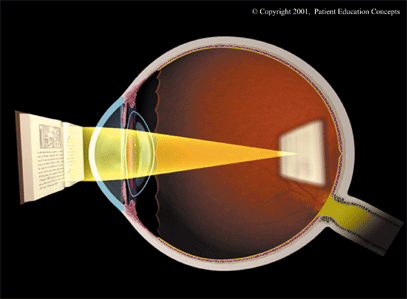
Myopic eyes (nearsighted) are too long. Without correction, objects focus before the retina and appear blurred.
Implantable contact lenses may replace laser vision correction in special cases
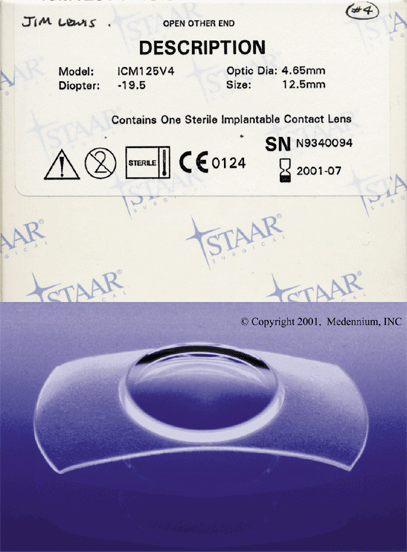
Medennium’s Phakic Refractive Lens also corrects refractive errors when placed behind the iris.
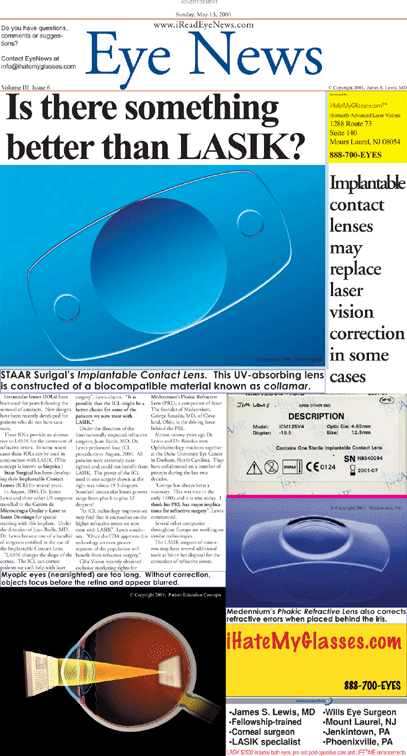
In addition to offering Visian ICL in Philadelphia, Dr. Lewis specializes in laser vision correction surgery. He is renowned throughout the greater Philadelphia area, including Bucks County and Elkins Park, as a highly talented Epi-LASIK and LASIK Philly surgeon.

